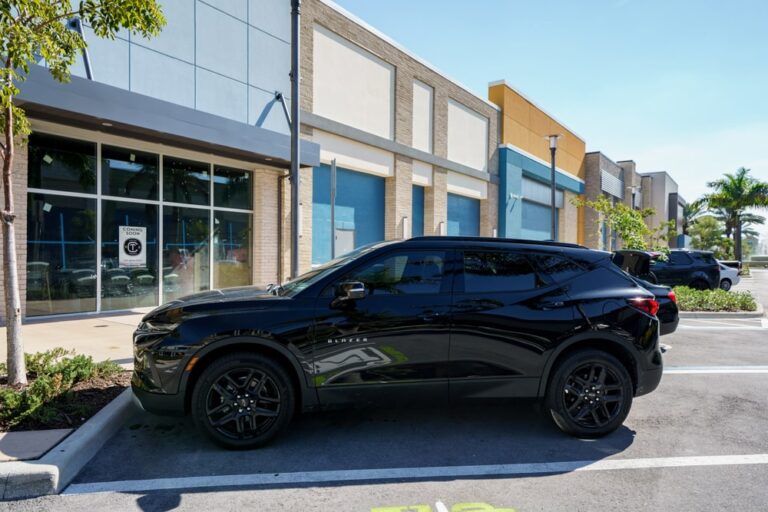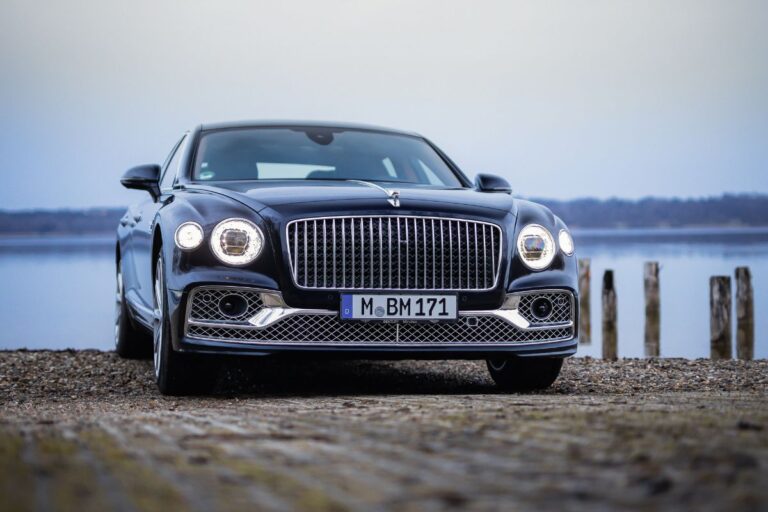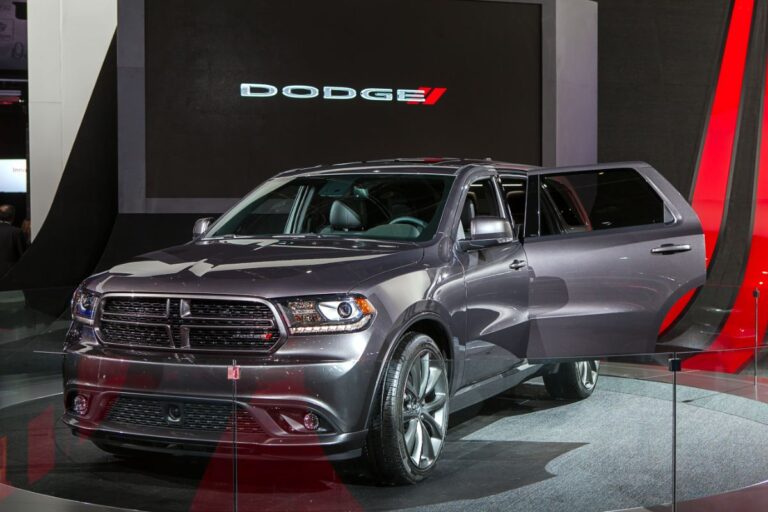
The other day I was thinking about my college days and thought of my roommate back in our college days. We shared an apartment for many years, and my roommate was fortunate to drive some gorgeous cars.
He first had a beautiful 1967 GTO, the original muscle car, and later a 1971 Corvette sports car. We had a lot of fun trips in those two cars. I believe I loved the GTO more, but who can nitpick about a bright yellow Corvette sports car in front of your apartment?
That made me think about how the two cars had their own identities yet were similar in delivering driving excitement. So, exactly how does a muscle car compare to a sports car?
Related: Porsche 911 vs Corvette Stingray
Muscle Car vs. Sports Car
It is first essential to know their differences to understand how a muscle car compares to a sports car.
What defines a muscle car?
A muscle car is usually defined as an intermediate-sized car, typically seating five occupants, with a high-performance V-8 at an affordable price. The muscle car would be the high-performance version of a production vehicle.
For example, an Oldsmobile muscle car would be the Oldsmobile 442, a Pontiac vehicle would be the Pontiac GTO, a Mustang Shelby Cobra, Dodge was the Dodge Charger R/T, and Plymouth had the Plymouth Roadrunner.
There are many more, but these are some of the best muscle cars from the late 60s to the early 70s. They were affordable production cars having unique designated models and engines. Muscle cars are divided into two different car sizes, which are the full-size muscle car and compact or pony cars.
Large luxury cars like the Buick Wildcat, Pontiac Grand Prix, Buick Wildcat, or Chrysler 300D could technically be called muscle cars. But their heavier weight and higher price are not classified as muscle cars.
What are some full-size muscle cars?
These are some full-size cars that were designated actual “muscle cars.”
1. 1967 Pontiac GTO

Thanks to my college roommate for allowing me to drive the original, or first designated muscle car, the Pontiac GTO. Since my experience is with the 67 Pontiac GTO and the specifications are based on it rather than the first muscle car, the 1966 Pontiac GTO.
The new, aggressive GTO body styling had “stacked” headlights, louvered taillights, and a cool, “winged” roof line. It just looked fast and was.
But you find the real GTO magic under the hood.
- Engine: 400ci with a four-barrel carburetor
- Horsepower: 360 horsepower
- Top speed: 120 MPH
- 0-60 Time: 4.9 seconds
- Transmission: Hurst Performance Dual-Gate Shifter
- Passenger capacity: 5
- Price (Model Year): $3,000 – GTO hardtop
2. 1967 Mustang Shelby Cobra GT350

The beautiful Mustang Shelby Cobra name first appeared in 1962, but the 1967 Mustang Shelby Cobra GT500 is the one to garner the muscle car designation firmly. And the truth is, if a Mustang is cool enough for Steve McQueen (his 68 Highland green Fastback in Bullitt), it is cool enough for me!
- Engine: 289ci with a four-barrel carburetor
- Horsepower: 306 horsepower
- Top speed: 140 MPH
- 0-60 Time: 6.9 seconds
- Transmission: Four-speed manual
- Passenger capacity: 4
- Price (Model Year): $3,000 – GTO hardtop
3. Oldsmobile 4-4-2

In 1967, the Oldsmobile 4-4-2 (designation for 400-cubic engine, four-barrel carburetor, and dual exhaust pipes) had finally earned its muscle car chops. The 4-4-2 designation was first applied to some designated Oldsmobile F-85s or Cutlasses in 1964.
But the name found a home with the Cutlass in 1967 and became known as the Oldsmobile 4-4-2. The 4-4-2 had a muscle car pedigree but proved to be an excellent car that balanced exceptional power with the ability to perform as a competent family car.
- Engine: 400ci with a four-barrel carburetor
- Horsepower: 360 horsepower
- Top speed: 130 MPH
- 0-60 Time: 6.5 seconds
- Transmission: Three-speed Hydra-Matic
- Passenger capacity: 5
- Price (Model Year): $2,468
4. 1968 Dodge Charger

Although the Dodge Charger was introduced in 1966, the new “coke bottle” design we are more familiar with was introduced in 1968. The contemporary body styling immediately identified the muscle car as the new Hemi model, especially with the high-performance R/T (Road/Track) badge.
Besides, and I guess I am hung up on Bullitt, the bad guys’ Steve McQueen was after in the famous movie car chase were driving a 1968 Dodge Charger R/T. The stuntman in the movie said he had to slow his 375 horsepower Dodge Charger during the car chase to allow McQueen’s 325 horsepower 1968 Mustang Fastback to catch up. Nuff said!
- Engine: 426ci Hemi with (2) four-barrel carburetors
- Horsepower: 425 horsepower
- Top speed: 131 MPH
- 0-60 Time: 4.9 seconds
- Transmission: Three-speed Hydra-Matic
- Passenger capacity: 5
- Price (Model Year): $4,600
5. 1968 Plymouth Road Runner Hemi

Most of us at a certain age are familiar with the car commercial and the iconic Plymouth Road Runner “Beep- Beep” horn blast. There was an excellent reason to move over with the Road Runner Hemi screaming down the road. Introduced as an affordable, high-performance car, this Road Runner not only runs fast but flat-out flies!
- Engine: 426ci Hemi with (2) four-barrel carburetors
- Horsepower: 425 horsepower
- Top speed: 105 MPH (1/4 Mile)
- 0-60 Time: 5.3 seconds
- Transmission: Four-speed manual
- Passenger capacity: 5
- Price (Model Year): $3,600
6. 1969 Chevrolet Camaro Z28

One of the hottest-looking muscle cars on the road in the 60s was the Chevrolet Camaro Z28. The Camaro had the best driving performance of the muscle cars and was a road racer first, then a hot street machine. The razor-sharp handling was partially due to an excellent power steering system that provided great road feedback to the driver.
Among the unique options for the Camaro Z28 were a cowl air-induction hood, positraction, and cleverly concealed headlights with the RS package.
- Engine: 302cid with two four-barrel carburetors
- Horsepower: 290 horsepower
- Top speed: 130 MPH
- 0-60 Time: 7.4 seconds
- Transmission: Four-speed Hurst Shifter
- Passenger capacity: 5
- Price (Model Year): $3,185
7. 1970 Chevelle Super Sport

An icon of muscle cars since its inception, the 1970 Chevelle Super Sport quickly became a legitimate muscle car. With a huge big block V-8 and a stylish, contemporary look, the Chevelle Super Sport is still popular today. One of the most powerful muscle cars with a different persona than most muscle cars.
A testament to the popularity of the Super Sport is that it is the most common car to be modified in America. So if John Wick loves to drive a 1970 Chevelle Super Sport, then it is okay for me.
- Engine: 454cid with a four-barrel carburetor
- Horsepower: 454 horsepower
- Top speed: 162 MPH
- 0-60 Time: 6.1 seconds
- Transmission: Four-speed manual
- Passenger capacity: 6
- Price (Model Year): $3,700
8. Ford Gran Torino GT

With its new aerodynamic styling and powerful 454 Cobra Jet engine, the Ford Gran Torino GT established itself as a muscle car contender. The new, aggressive design of the Gran Torino GT quickly became popular with the mid-size muscle car crowd. It became so popular that Gran Torino even had a Clint Eastwood movie named after it.
- Engine: 429ci with a Ram Air four-barrel carburetor
- Horsepower: 375 horsepower
- Top speed: 136 MPH
- 0-60 Time: 6.3 seconds
- Transmission: Four-speed manual
- Passenger capacity: 6
- Price (Model Year): $3.105
9. 1970 Plymouth ‘Cuda Hemi

The Plymouth Barracuda, first introduced in 1964, undertook a major facelift in 1970 along with a 426 cubic inch Hemi engine. This new growling, menacing muscle car was designated the 1970 Plymouth ‘Cuda Hemi. The brand’s name was shortened from Barracuda to ‘Cuda and, with the Hemi, became one of the era’s most powerful and fastest muscle cars.
With a new, aggressive body style, a huge Hemi engine, and powerful performance, the ‘Cuda Hemi became an instant muscle car classic.
- Engine: 426ci with two four-barrel carburetors
- Horsepower: 425 horsepower
- Top speed: 155 MPH
- 0-60 Time: 5.8 seconds
- Transmission: Four-speed manual
- Passenger capacity: 5
- Price (Model Year): $3,900
10. 1968 Plymouth GTX Hemi

Introduced in 1967, the Plymouth GTX underwent a significant facelift in 1968 to a more muscular and stylish design. A 426 cubic Hemi engine was added to support the aggressive body style’s menacing appearance. The 1968 Plymouth GTX Hemi was an upscale version of the Plymouth Roadrunner, just as fast but with added luxury missing in the Roadrunner.
The added chrome accents and higher-quality interior materials positioned the GTX in its category. Also, if you ever wondered how the Hemi engine came about, all of the Dodge and Plymouth muscle cars with the Hemi engine should answer that question.
- Engine: 426ci with a four-barrel carburetor
- Horsepower: 425 horsepower
- Top speed: 147 MPH
- 0-60 Time: 5.8 seconds
- Transmission: Three-speed TorqueFlite
- Passenger capacity: 5
- Price (Model Year): $3,335
What defines a sports car?
Sports cars are notably smaller than big-body muscle cars and usually are two-passenger vehicles. The smaller and lighter sports cars have much better handling characteristics than their counterparts. Rather than the big, bold look of muscle cars, sports cars have a sleek design with a more modern, compact body.
Another way to compare a muscle car to a sports car is that the muscle car focuses on a large body containing a vast, powerful engine. The sports car has a smaller engine and focuses on how well it handles rather than releasing vast amounts of raw power. Superior handling is the sportscar’s hallmark, while muscle cars are straight-line speed winners.
The previously mentioned Corvette’s excellent handling will beat the GTO every time on twisting mountain roads but lose on the drag strip to the GTO’s straight line power.
Also, we should note that many manufacturers make sports cars worldwide, while muscle cars are primarily American-made.
What are some notable sports cars?
These are some of the most notable sports cars of the 60s and 70s.
1. 1966 Chevrolet Corvette Stingray

I loved my roommate’s 1970 Corvette, especially when he graciously permitted me to drive it and pick up my date in college. However, as much as his Corvette was a gorgeous sports car, many believe the highwater mark for Corvette’s styling and performance was the 1963-1967 Corvette Stingray years.
And there have been a lot of different Corvette models since its introduction in 1953. But the 1666 Stingray stands out as a timeless American sportscar with exceptional power, excellent handling, and a body style that still excites today.
The two-passenger 1966 Stingray is legendary for being a high-performance vehicle, especially with the 427 cubic inch engine. And the Stingray fastback version could have been the most beautiful, even though there was also a convertible model. But a Corvette is an exceptional car and, if you don’t believe me, ask my date!
- Engine: 427ci Hemi with (2) four-barrel carburetors
- Horsepower: 425 horsepower
- Top speed: 140 MPH
- 0-60 Time: 4.8 seconds
- Transmission: Three-speed manual
- Passenger capacity: 2
- Price (Model Year): $4,295 (Base coupe)
2. 1970 Datsun 240Z

The iconic Datsun 240Z was an immediate hit when introduced in 1970. Although a Japanese sports car, it had ageless European styling and, with its fresh, new look, was hot in demand. Beautiful styling, quality build materials, with sports car performance made it a player in the American automobile market.
The 240Z was a lightweight, two-seater with excellent handling and performance. The unique appearance of the 240Z was ahead of its time in 1970 in such an affordable and small package. The Datsun 240Z is considered one of history’s most influential classic sports cars.
- Engine: 2.4-liter inline six-cylinder with a single carburetor
- Horsepower: 147horsepower
- Top speed: 127 MPH
- 0-60 Time: 8.3 seconds
- Transmission: Four-speed manual
- Passenger capacity: 2
- Price (Model Year): $3,500
3. 1965 MG MGB

Introduced in 1962, the MG MGB (Morris Garage) British sports car hit its stride with a new, more powerful engine and styling upgrades. The spirited, two-seat British sports car became the world’s #1 sports car until being discontinued in 1980. There should be a reason why the MGB brand sold over 514,000 vehicles, and there is.
The perky MGB was fun to drive, inexpensive, dependable, and had great sports car styling to make the MGB a hit. And today, it still has excellent residual resale value!
- Engine: 2.4-liter inline six-cylinder with two carburetors
- Horsepower: 91 horsepower
- Top speed: 103 MPH
- 0-60 Time: 11 seconds
- Transmission: Four-speed manual
- Passenger capacity: 2
- Price (Model Year): $2,670
4. 1969 Triumph TR6

The introduction of the latest version of Triumph Motors sports cars, the TR6, quickly won over the loyalty of sports car enthusiasts. The previous Triumph sports cars, primarily the TR250 and Triumph Spitfire, laid the groundwork for the introduction of the TR6.
The classic TR6 lines, still stylish 50 years later, were created by Karmann for Triumph Motors. Immediately recognizable for its straight, classic body, the TR6 was fun to drive. I had the pleasure of owning a gorgeous British racing green 1973 TR6.
I loved the deep, throaty roar of the TR6 exhaust pulling away from a stop light. The competent TR6 was not one of the quickest sports cars in its heyday but one of the most enduring. And by the way, my roommate did not have a Triumph sports car but had a Triumph 750 motorcycle. Go figure.
- Engine: 152ci inline six-cylinder with two carburetors
- Horsepower: 150 horsepower
- Top speed: 119 MPH
- 0-60 Time: 11 seconds
- Transmission: Four-speed manual
- Passenger capacity: 2
- Price (Model Year): $3,000
5. 1969 Porsche 911

Any article about sports cars has to include the legendary Porsche 911. First introduced by Porsche AG in 1964 and is still in production today. Pretty remarkable for the Volkswagen Beetle’s second cousin!
The 1969 Porsche 911 was upgraded with minor trim changes, but the mechanical modifications were more robust. The 911 was lengthened 2.2 inches and extended the trailing arms to allow for moving the rear wheels back further. The 1969 Porsche added more excitement to the Porsche 911 magic.
- Engine: 1339ci flat six-cylinder with Weber triple-throat carburetor
- Horsepower: 177 horsepower
- Top speed: 142 MPH
- 0-60 Time: 7 seconds
- Transmission: Five-speed manual
- Passenger capacity: 2
- Price (Model Year): $7,700
6. 1967 Jaguar XKE (E-Type)

The gorgeous Jaguar XKE is immediately recognizable for its classic styling and ultimate sports car persona. The 1967 Jaguar XKE was recognized by none other than Enzo Ferrari as “the most beautiful car ever made.” The Jaguar XKE became the sports car symbol of the sixties, and once again, Steve McQueen pops back up as a proud XKE owner.
The timeless styling of the XKE is augmented with power and performance thanks to a powerful six-cylinder power plant. The impressive power plant is tuned to the XKE racing-derived suspension that competes and beats many high-performance sports cars, including Ferrari.
In addition, the Jaguar XKE was only about $1,600 more than a Corvette, yet it directly competed with half the price of Ferraris and Aston-Martins.
- Engine: 257ci with (2) Stromberg carburetors
- Horsepower: 266 horsepower
- Top speed: 150 MPH
- 0-60 Time: 6.8 seconds
- Transmission: Four-speed manual
- Passenger capacity: 2
- Price (Model Year): $5,595
7. 1965 Shelby Cobra 289

Who would have thought a failed chicken farmer and dump truck operator would be behind creating the Shelby Cobra 289? Carroll Shelby more or less conned Ford Motor Company into sponsoring engines for the Shelby Cobra.
Shelby brought life to the gorgeous AC ACE roadster from Great Britain with the Ford small block motors and gave birth to the legendary Shelby Cobra 289. The beautiful Cobra was an exciting, high-performance car that was truly unique. If one were lucky to have a Shelby Cobra 289 today, it would be worth around a cool million, not bad for a chicken farmer.
- Engine: 289ci with four Weber carburetors
- Horsepower: 400 horsepower
- Top speed: 162 MPH
- 0-60 Time: 5.8 seconds
- Transmission: Four-speed manual
- Passenger capacity: 2
- Price (Model Year): $5,995
8. 1968 American Motors AMX

The lightweight, two-seater 1968 American Motors AMX was the sports car American Motors hoped to compete with against the Corvette. And in truth, it did have the chops for such a task, with the style and performance to make it a player in an American-made sports car arena.
Slightly shorter and lighter than the Corvette, the AMX had a spirited demeanor with an aggressive attitude to attract the public’s attention. The unusual AMC AMX had a short deck lid and “winged” fastback roofline appearance. But the unique appearance was not to be confused with performance, which the AMX had plenty.
The AMX set several speed records with the legendary Craig Breedlove at the controls. Breedlove was the first driver to hit the 500 MPH mark, driving the iconic turbo-jet Spirit of America race car at the Bonneville Salt Flats.
- Engine: 390ci with a four-barrel carburetor
- Horsepower: 315 horsepower
- Top speed: 120 MPH
- 0-60 Time: 6.6 seconds
- Transmission: Four-speed manual
- Passenger capacity: 2
- Price (Model Year): $3,395
9. 1967 Austin Healy Mark 3000

The classically European Austin Healy Mark 3000 found a home in the US. The 1967 Mk 3000 had a larger six-cylinder engine, adding more panache to a classic sports car. As a result, the Mk 3000 is not only has eye-catching, sculpted lines but also has the performance to match.
Competing in multiple international races, including LeMans and Sebring, the Mk 3000 competed well and made a name for itself. Beautifully styled with ample power, the two-seat Austin Healy Mark 3000 became an instant classic.
- Engine: 178ci with two SU HD8 carburetors
- Horsepower: 150 horsepower
- Top speed: 122 MPH
- 0-60 Time: 9.8 seconds
- Transmission: Four-speed manual
- Passenger capacity: 2
- Price (Model Year): $3,570
Muscle Car vs. Sports Car – Which Do I Prefer?
Having experience driving a muscle car and a sports car, I have to say I prefer the muscle car. Although the sports car has a more sleek and stylish design and certainly much better road handling, it just does not have the rush of a muscle car. Please allow me to explain my reason.
Why do I prefer muscle cars?
Have you felt the thrill of being pressed back into the driver’s seat of a two-ton, five-passenger car with the rear wheels smoking? Or felt the rumble of an enormous, fire-breathing engine coming up to speed?
You haven’t if you are driving a two-seat sports car weighing 2,500 lbs. with a six-cylinder engine. No offense to the incredible 1971 Corvette, but being sexy is not the same.
The muscle car is all brute power with little finesse, which is fine with me.
Please give me the 1967 Pontiac GTO!






